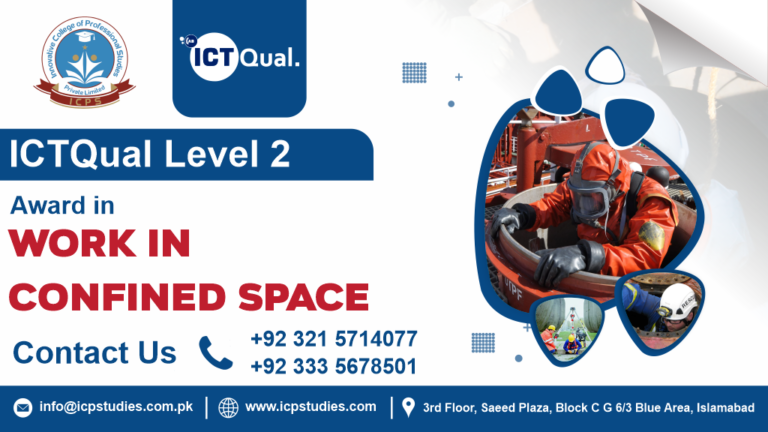In the world of industrial operations, construction sites, and even theatrical productions, the art of lifting and rigging is indispensable. From ensuring safety to optimizing efficiency, proper lifting and rigging techniques are fundamental. Today, we delve into the significance and impact of the ‘Level 2 Award in Lifting and Rigging’, shedding light on why this qualification is crucial for professionals in various sectors.
The ‘Level 2 Award in Lifting and Rigging‘ is more than just a certification; it’s a testament to an individual’s competency in safely handling lifting equipment and rigging operations. Accredited by reputable bodies, this qualification signifies that the holder has undergone structured training, assessments, and has demonstrated proficiency in crucial aspects of lifting and rigging.
The Level 2 Award in Lifting and Rigging stands as a pillar of safety and proficiency in industries where the movement of heavy loads is routine. By equipping individuals with the knowledge and skills to perform these tasks safely and effectively, this qualification not only enhances individual career prospects but also plays a crucial role in maintaining workplace safety standards.
All About ICTQual Level 2 Award in Lifting and Rigging
Course Overview
The “Level 2 Award in Lifting and Rigging” is a certification program designed to equip individuals with the necessary skills and knowledge to safely and effectively perform lifting and rigging operations in various industries. This qualification typically involves structured training and assessment to ensure that participants understand and can apply best practices in handling lifting equipment and rigging setups.
The Level 2 Award is often recognized by industry bodies and employers as a mark of competence and reliability in individuals responsible for lifting and rigging tasks. It serves as a foundation for career advancement in fields such as construction, manufacturing, logistics, and entertainment, where safe and efficient handling of heavy loads is critical.
Study Units
- Lifting Equipment and Rigging Gear
- Rigging Principles and Techniques
- Load Calculation and Rigging Plans
- Safety Procedures and Regulations
- Practical Skills Training
Admission Criteria
The “Level 2 Award in Lifting and Rigging” course is designed for individuals who are involved in or aspire to work in industries where the safe and efficient handling of heavy loads is essential. This includes but is not limited to:
- Construction Workers: Those involved in erecting structures, handling construction materials, and operating heavy machinery where lifting and rigging are integral to daily operations.
- Warehouse and Logistics Staff: Individuals responsible for loading, unloading, and stacking goods using lifting equipment such as cranes, forklifts, and hoists.
- Manufacturing Personnel: Workers engaged in production processes that require the movement of large components or materials using lifting and rigging techniques.
- Event and Entertainment Crew: Professionals in the entertainment industry who set up stages, lighting rigs, and audiovisual equipment using rigging systems.
- Maritime and Offshore Workers: Those working on ships, offshore platforms, or in ports where lifting operations are crucial for cargo handling and vessel maintenance.
- Health and Safety Officers: Professionals responsible for overseeing workplace safety, particularly in industries prone to risks associated with lifting and rigging.
- Engineering and Maintenance Teams: Personnel involved in equipment maintenance, installation, and repairs that require knowledge of safe lifting and rigging practices.
- Career Seekers and Career Advancers: Individuals looking to enhance their skills and employability in industries that prioritize safety and compliance with lifting and rigging regulations.
Ideal Candidate
Entry requirements for the “Level 2 Award in Lifting and Rigging” course typically include:
- Minimum Age: Participants are usually required to be at least 18 years old due to the nature of the training and the responsibilities involved in lifting and rigging operations.
- Educational Background: A basic level of education, typically equivalent to completion of secondary school or its equivalent, may be required. This ensures participants have the necessary literacy and numeracy skills to understand course materials and assessments.
- Health and Fitness: Due to the physical demands of the course, participants may need to meet certain health and fitness criteria. This ensures they can safely participate in practical activities involving lifting equipment and rigging gear.
- Work Experience: While not always mandatory, some courses may prefer or require participants to have relevant work experience in industries where lifting and rigging operations are common. This can include construction, manufacturing, logistics, or entertainment industries.
- Language Proficiency: Participants may need to demonstrate proficiency in the language of instruction to understand course materials, safety instructions, and assessments effectively.
- Health and Safety Awareness: Awareness of health and safety practices is often preferred, as participants will be expected to adhere to strict safety protocols throughout the course.
Learning Outcome
Lifting Equipment and Rigging Gear
- Identify different types of lifting equipment and rigging gear.
- Explain the specific applications and limitations of each type of equipment.
- Demonstrate the proper selection, inspection, and maintenance procedures for lifting equipment and rigging gear.
- Apply industry standards and best practices for the safe use of lifting equipment and rigging gear in various operational scenarios.
2. Rigging Principles and Techniques
- Understand fundamental rigging principles, including load distribution, center of gravity, and load stability.
- Demonstrate proficiency in basic rigging techniques such as sling configurations, hitch types, and knot tying.
- Interpret rigging drawings and plans to effectively execute rigging tasks.
- Apply rigging principles to ensure the safe and efficient movement of loads in compliance with regulations and safety standards.
3. Load Calculation and Rigging Plans
- Calculate loads based on weight, size, shape, and center of gravity.
- Interpret engineering specifications and drawings to create rigging plans.
- Develop rigging plans that optimize load distribution, minimize risks, and ensure load stability during lifting operations.
- Evaluate and modify rigging plans based on changing operational conditions and safety considerations.
4. Safety Procedures and Regulations
- Identify potential hazards associated with lifting and rigging operations.
- Implement safety procedures and protocols to mitigate risks and ensure a safe working environment.
- Interpret relevant safety regulations, standards, and codes applicable to lifting and rigging activities.
- Conduct safety inspections and audits to ensure compliance with safety regulations and organizational policies.
5. Practical Skills Training
- Demonstrate proficiency in hands-on tasks related to lifting and rigging operations.
- Apply theoretical knowledge to practical scenarios involving the use of lifting equipment and rigging gear.
- Execute rigging plans and procedures effectively and safely under supervision.
- Develop problem-solving skills to address challenges encountered during lifting and rigging operations.
These learning outcomes collectively prepare individuals to confidently and competently perform lifting and rigging tasks while prioritizing safety, efficiency, and compliance with industry standards and regulations.
FAQs about ICTQual Level 2 Award in Lifting and Rigging







